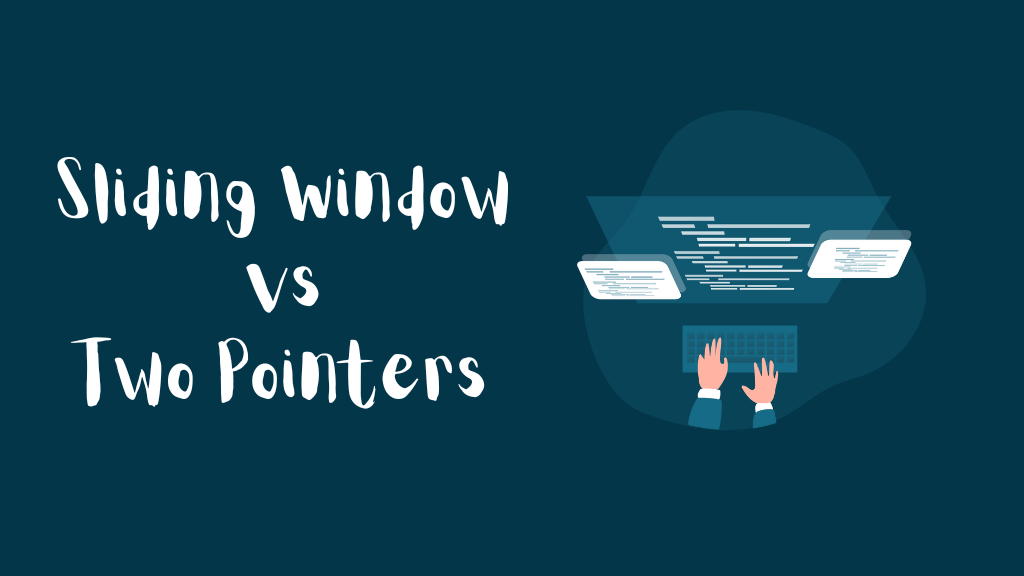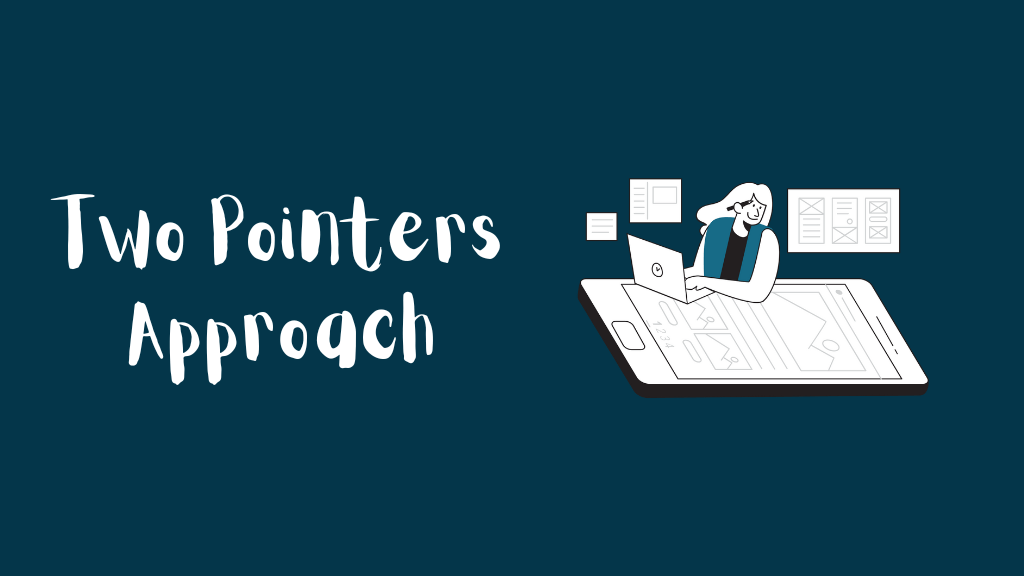Last updated on February 5th, 2025 at 03:51 am
In this article, We will explore the Sliding Window vs Two Pointers Approach, how it works, and which one is best to solve problems.
Table of Contents
1. What is the Two Pointers Technique?
Two Pointers is a technique used to solve problems. It involves searching, sorting, or iterating through data like arrays or strings. It works using two pointers, one pointer at the beginning and the other at the end of the list. As pointers move towards each other, they check if the element at their current positions
2. What is the Sliding Window Technique?
The Sliding Window technique solves problems that involve searching through a list or array. It creates a “window” of elements that moves through the list, checking if the elements within the window match the condition we’re looking for.
3. Use Cases – where each technique use
3.1 Two Pointers are used when
- Sorting and Swapping: When you need to sort an array or swap elements based on specific conditions, two pointers can make quick work of it.
- Pair Problems: Finding pairs with a given sum in a sorted array is a classic use case, ensuring efficient solutions.
3.2 Sliding Window is used when
- Subarray Challenges: If you’re dealing with subarray problems, sliding windows can efficiently identify the desired subarrays.
- Pattern Search: Finding specific patterns or consecutive elements with a particular sum is a breeze with this technique.
4. Code Implementation Example
4.1 Two Pointers Technique
def max_sum_pair(my_list):
left = 0
right = len(my_list) - 1
max_sum = float('-inf')
while left < right:
if my_list[left] + my_list[right] > max_sum:
max_sum = my_list[left] + my_list[right]
if my_list[left] + my_list[right] < 0:
left += 1
else:
right -= 1
return max_sum4.2 Sliding Window Technique
def longest_substring(s):
char_map = {}
max_length = start = 0
for i, char in enumerate(s):
if char in char_map and start <= char_map[char]:
start = char_map[char] + 1
else:
max_length = max(max_length, i - start + 1)
char_map[char] = i
return max_lengthYou have a list of numbers, and you need to find the length of the longest subarray with a sum greater than a given value. Which technique would you choose, and why?
Answer: Sliding Window
5. Advantages and Disadvantages – Sliding Window vs Two Pointers
5.1 Two Pointers
- Pros: Simple to implement, efficient for specific tasks, and great for maintaining order in sorted arrays.
- Cons: Limited to certain problem types, may not work for complex patterns.
5.2 Sliding Windows
- Pros: Versatile, excellent for pattern recognition, and adaptable to various problem scenarios.
- Cons: Can be more complex to implement, especially for beginners.
6. Two Pointers vs Sliding Window: Key Differences
Key differences of Two Pointers and Sliding Window are:
- Direction: Two Pointers move towards each other, while Sliding Window moves in one direction.
- Window size: Two Pointers typically use a fixed window size, while Sliding Window can have a variable window size.
- Condition checking: Two Pointers check the condition at each step while the Sliding Window checks the condition within the window.
7. When to Use – 2 Pointer vs Sliding Window
- Use Two Pointers when:
- You need to find a pair of elements that match a condition.
- You need to search through a sorted list.
- Use Sliding Window when:
- You need to find a subarray that matches a condition.
- You need to search through an unsorted list.
8. Real-world Applications
Both Two Pointers and Sliding Window have many real-world applications. A few examples are:
- Google search: Google uses a variation of the Two Pointers technique to rank search results.
- Image processing: Sliding Window is used in image processing to detect objects within an image.
- Financial analysis: Two Pointers can be used to analyze financial data, such as finding the maximum profit within a time period.
FAQs
What is the main difference between Two Pointers and Sliding Window?
The main difference is how they move through the sequence. Two Pointers often move towards each other, while Sliding Window involves a window that moves over the sequence, adjusting its size as needed.
Can Two Pointers and Sliding Window be used together?
Yes! Sometimes, problems require a combination of both techniques to find the best solution.
Are Two Pointers and Sliding Window techniques only for arrays?
No, Two Pointers and Sliding Window can be used for strings and other data structures as well. Any sequence of elements can potentially be solved using these methods.
How can I practice using Two Pointers and Sliding Window?
You can practice by solving problems on coding platforms like LeetCode or CodeChef, where you’ll find a variety of challenges that can be solved using these techniques.
How do I decide between using two pointers and a sliding window for a specific problem?
It’s all about understanding the problem’s requirements. Two pointers are great for tasks involving sorting, merging, or finding pairs. Sliding window shines when you need to identify patterns or subarrays within a larger dataset.
Can I use both techniques (Two Pointers and Sliding Window) in a single problem?
Some complex problems might require a combination of both Two Pointers and Sliding Window techniques. For instance, you might use two pointers to identify potential pairs and then apply a sliding window to validate specific conditions.






